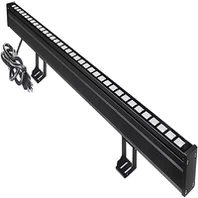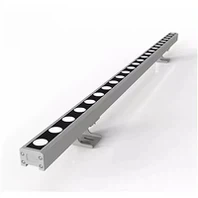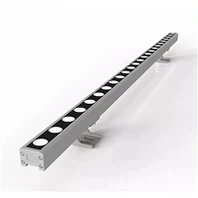Key Differences Between T8 Fluorescent Tubes and T5/T12 Models

Fluorescent tubes have been a cornerstone of commercial and industrial lighting for over a century, evolving through various iterations to balance efficiency, brightness, and practicality. Among the most common types are T8, T5, and T12 tubes-each distinguished by their diameter, performance metrics, and applications. While they share the same basic operating principle (using mercury vapor and phosphor coatings to produce light), their differences in size, energy use, and output make them suited for distinct environments. Understanding these variations is critical for choosing the right lighting for spaces like offices, warehouses, or schools, as well as for planning upgrades or replacements. Below, we break down the key differences between T8, T5, and T12 fluorescent tubes, exploring their design, performance, compatibility, and ideal uses.
Design and Dimensions: The "T" in Tubes
The "T" in T8, T5, and T12 stands for "tubular," with the number representing the diameter in eighths of an inch. This fundamental difference in size impacts everything from fixture compatibility to light distribution:
T12 Tubes: The oldest and largest of the three, T12 tubes measure 12/8 inches (1.5 inches) in diameter. Introduced in the early 20th century, they were the standard for decades, available in lengths ranging from 2 feet to 8 feet (with 4-foot and 8-foot models most common). Their larger size requires bulkier fixtures, which can be a drawback in spaces where ceiling height or aesthetics matter.
T8 Tubes: Developed as a more efficient alternative to T12s, T8 tubes have a diameter of 8/8 inches (1 inch)-slimmer than T12s but thicker than T5s. They gained popularity in the 1990s and are now widely used in commercial buildings, available in the same lengths as T12s (2–8 feet). Their smaller diameter allows for more compact fixtures, making them suitable for spaces where a sleeker design is preferred.
T5 Tubes: The smallest and most modern, T5 tubes measure 5/8 inches (0.625 inches) in diameter. They were introduced in the 2000s as an even more efficient option, primarily available in 2-foot, 4-foot, and 5-foot lengths (with 4-foot models dominating). Their narrow profile enables high-density installations (e.g., multiple tubes in a single fixture), ideal for task lighting or spaces requiring intense, focused illumination.
These size differences affect not only fixture compatibility but also heat dissipation: smaller tubes (T5s) generate less heat and fit into tighter spaces, while larger tubes (T12s) require more ventilation to prevent overheating.
Energy Efficiency and Power Consumption
One of the most significant distinctions between T8, T5, and T12 tubes lies in their energy efficiency-measured by power consumption (watts) and luminous efficacy (lumens per watt, lm/W). This directly impacts operating costs, making it a key factor for both residential and commercial users:
T12 Tubes: The least efficient, T12 tubes consume the most power relative to their light output. A standard 4-foot T12 tube uses 40–48 watts to produce 2200–2600 lumens, resulting in a luminous efficacy of 50–60 lm/W. This inefficiency is partly due to their older design, which relies on magnetic ballasts (also energy-wasting) that convert up to 20% of power into heat rather than light.
T8 Tubes: A notable upgrade over T12s, T8 tubes offer better energy efficiency. A 4-foot T8 tube uses 32 watts to emit 2800–3200 lumens, achieving 85–100 lm/W-30–40% more efficient than T12s. This improvement is partly due to advancements in phosphor coatings, which convert UV light to visible light more effectively. T8s are also compatible with electronic ballasts (instead of magnetic ones), which reduce energy loss and further boost efficiency.
T5 Tubes: The most efficient of the three, T5 tubes (especially high-output models, labeled T5 HO) deliver superior efficacy. A 4-foot T5 HO tube uses 54 watts to produce 5000–5500 lumens, reaching 90–100 lm/W-on par with T8s but with higher total output. Standard T5s (non-HO) use even less power: a 4-foot model uses 28 watts for 2800–3000 lumens, achieving 100–107 lm/W. Their efficiency stems from advanced phosphor blends and tighter manufacturing tolerances, which minimize energy waste.
The cost savings from these efficiency differences are substantial. For example, a commercial space with 100 4-foot tubes running 12 hours daily (at $0.15/kWh) would spend:
$2,592 annually with T12s (40W).
$1,728 annually with T8s (32W).
$1,512 annually with standard T5s (28W).
Over 10 years, switching from T12s to T5s saves nearly $10,800-justifying the higher upfront cost of T5 fixtures for long-term users.
Light Output, Color, and Distribution

Beyond efficiency, T8, T5, and T12 tubes differ in light output (lumens), color temperature (CCT), color rendering (CRI), and distribution-factors that determine their suitability for specific tasks:
Light Output (Lumens):
T12s: 2200–2600 lumens (4-foot), sufficient for basic ambient lighting but dim compared to newer models.
T8s: 2800–3200 lumens (4-foot), brighter than T12s, making them ideal for offices, schools, and retail spaces.
T5s: 2800–3000 lumens (standard 4-foot) or 5000–5500 lumens (T5 HO 4-foot), with HO models suitable for high-ceiling areas like warehouses or gyms.
Color Temperature (CCT):
T12s: Limited options, typically 3500K (neutral white) or 4100K (cool white), with fewer choices for warm or very cool tones.
T8s: Wider range, including 2700K (warm white), 3500K–4100K (neutral white), and 5000K–6500K (cool white), catering to diverse environments.
T5s: Most versatile, offering 2700K–6500K, with precise color control-critical for spaces like art galleries or medical facilities where accurate color perception matters.
Color Rendering Index (CRI):
T12s: Low CRI (60–70), meaning colors appear muted or distorted-unsuitable for tasks requiring color accuracy (e.g., retail displays).
T8s: Moderate CRI (70–80), adequate for general use (offices, hallways) but not for high-precision tasks.
T5s: High CRI (80–90), rendering colors more accurately-making them ideal for laboratories, art studios, or grocery stores (where fresh produce appearance matters).
Light Distribution:
T12s: Wider beam angle (180°), but uneven distribution due to their larger diameter, leading to "hot spots" and dim corners.
T8s: More uniform distribution (120°–160°), with better coverage in medium-sized spaces.
T5s: Narrow, focused beam (120°), with HO models designed for long-distance projection-perfect for illuminating high shelves or large open areas.
Lifespan and Maintenance Requirements
Lifespan and maintenance needs vary significantly between the three tube types, affecting long-term costs and hassle:
Lifespan:
T12s: Shortest lifespan at 7,000–10,000 hours, partly due to their reliance on magnetic ballasts (which cause voltage fluctuations that stress the tube).
T8s: Moderate lifespan of 10,000–20,000 hours, extended by electronic ballasts that provide stable current.
T5s: Longest lifespan at 15,000–30,000 hours, thanks to advanced electrode design and efficient cooling (smaller diameter dissipates heat faster).
Ballast Compatibility:
T12s: Require magnetic ballasts (older, less efficient) or modified electronic ballasts. Many jurisdictions now restrict magnetic ballasts due to energy waste.
T8s: Designed for electronic ballasts, which are quieter, more efficient, and extend tube life. They can sometimes fit T12 fixtures with adapter kits, but this is not recommended for long-term use.
T5s: Require specialized high-frequency electronic ballasts (not compatible with T8 or T12 ballasts), which are more expensive upfront but reduce maintenance costs over time.
Failure Modes:
T12s: Prone to flickering, blackening at the ends (due to electrode wear), and premature burnout in cold environments (below 10°C).
T8s: Less flickering than T12s but may dim over time (lumen depreciation). They perform poorly in extreme cold (below 0°C).
T5s: Minimal flickering, slow lumen depreciation, and better cold-weather performance (functional down to -20°C), making them suitable for unheated spaces like warehouses or garages.
Compatibility and Retrofit Considerations
For users looking to upgrade existing lighting, compatibility between tube types and fixtures is critical:
T12 to T8 Retrofits: T8 tubes can sometimes fit into T12 fixtures with adapter kits, but this is a temporary solution. T12 fixtures are wider, so T8 tubes may rattle or not seat properly, reducing lifespan. Replacing T12 fixtures with T8-compatible ones is more reliable.
T8 to T5 Retrofits: T5 tubes cannot fit into T8 fixtures due to their smaller diameter. Upgrading requires new fixtures designed for T5s, which is costlier upfront but offers long-term savings in energy and maintenance.
Ballast Upgrades: Retrofitting often requires replacing ballasts: T12 magnetic ballasts must be swapped for electronic ones when upgrading to T8s, while T5s need dedicated ballasts. These upgrades add to initial costs but are essential for optimal performance.
Ideal Applications for Each Tube Type
Each tube type excels in specific environments, based on their size, efficiency, and light output:
T12 Tubes: Now largely obsolete, T12s are only practical in older buildings with existing T12 fixtures where replacement costs are prohibitive. They may still be found in warehouses or storage facilities with minimal lighting needs, but their inefficiency makes them unsuitable for long-term use.
T8 Tubes: The most versatile option, T8s are ideal for offices, schools, retail stores, and residential garages. Their balance of efficiency, brightness, and compatibility with existing fixtures makes them a cost-effective choice for spaces requiring moderate illumination.
T5 Tubes: Best for high-performance applications: T5 HO models work in warehouses, gyms, and industrial spaces needing intense light; standard T5s excel in task lighting (e.g., workbenches, kitchen under-cabinet lights) and environments requiring accurate color rendering (art studios, hospitals).
Conclusion
The differences between T8, T5, and T12 fluorescent tubes-from size and efficiency to light output and compatibility-make each suited for distinct roles. T12s, once ubiquitous, are now outdated due to their inefficiency and short lifespan. T8s strike a balance between performance and cost, making them a reliable choice for general lighting. T5s, the most advanced, offer superior efficiency, longevity, and color rendering, justifying their higher upfront costs for high-demand or precision environments.
When choosing between them, consider factors like existing fixtures, energy costs, and lighting needs: T8s are a safe bet for most commercial spaces, T5s for high-performance applications, and T12s only as a temporary solution. As LED technology continues to advance, all three may eventually be phased out, but for now, understanding their differences remains key to making informed lighting decisions.
Our service:
1.Your inquiry related to our products or prices will be replied in 24 hours.
2.Well-trained and experienced staffs to answer all your enquires in fluent English.
3.OEM&ODM, we can help you to design and put into product.
4.Distributoership are offered for your unique design and some our current models.
5.Protection of your sales area, ideas of design and all your private information.
https://www.benweilight.com/lighting-tube-bulb/6000k-led-tube-120cm.html
Shenzhen Benwei Lighting Technology Co.,Ltd
Telephone: +86 0755 27186329
Mobile(+86)18673599565
Whatsapp :19113306783
Email:bwzm15@benweilighting.com
Skype: benweilight88
Web: www.benweilight.com




